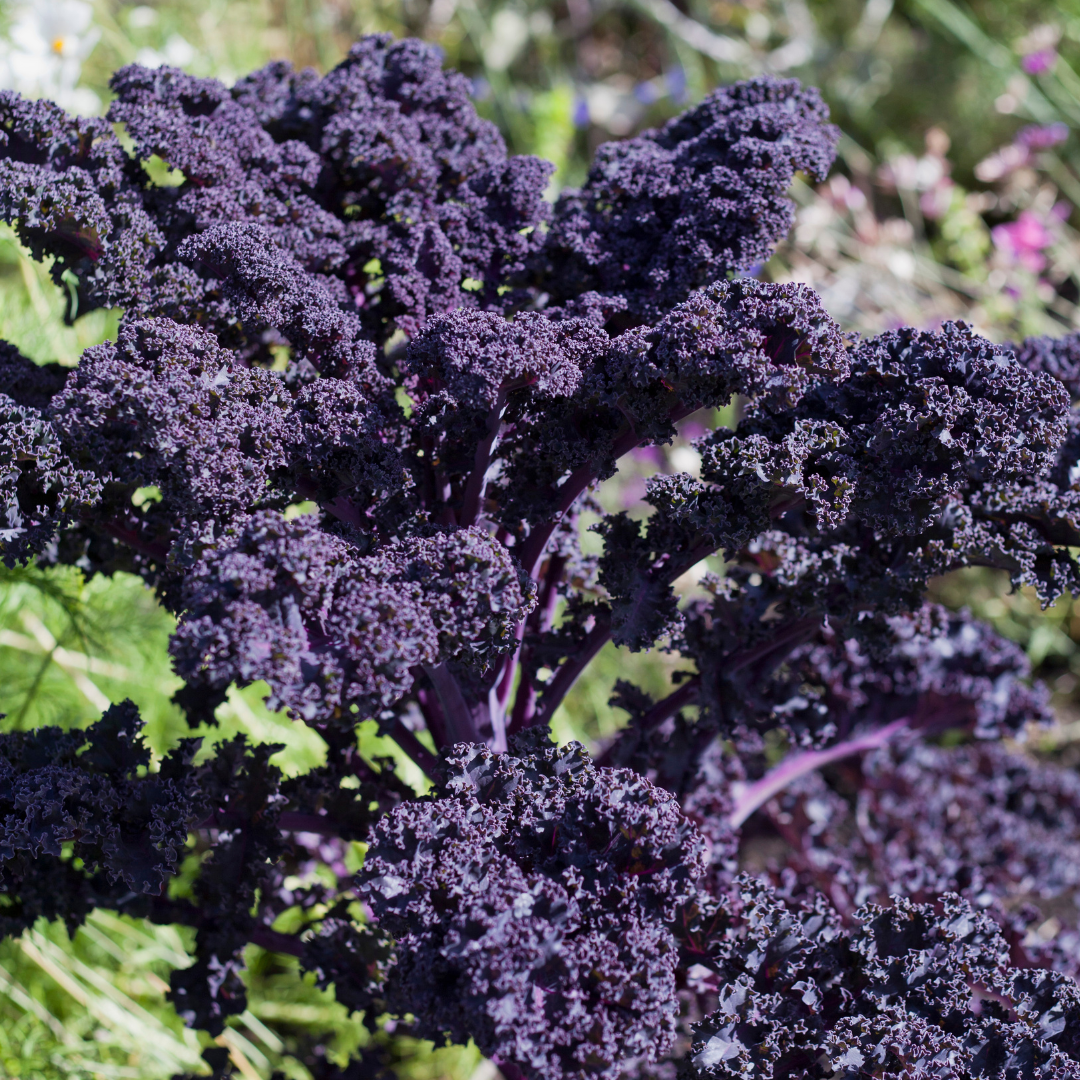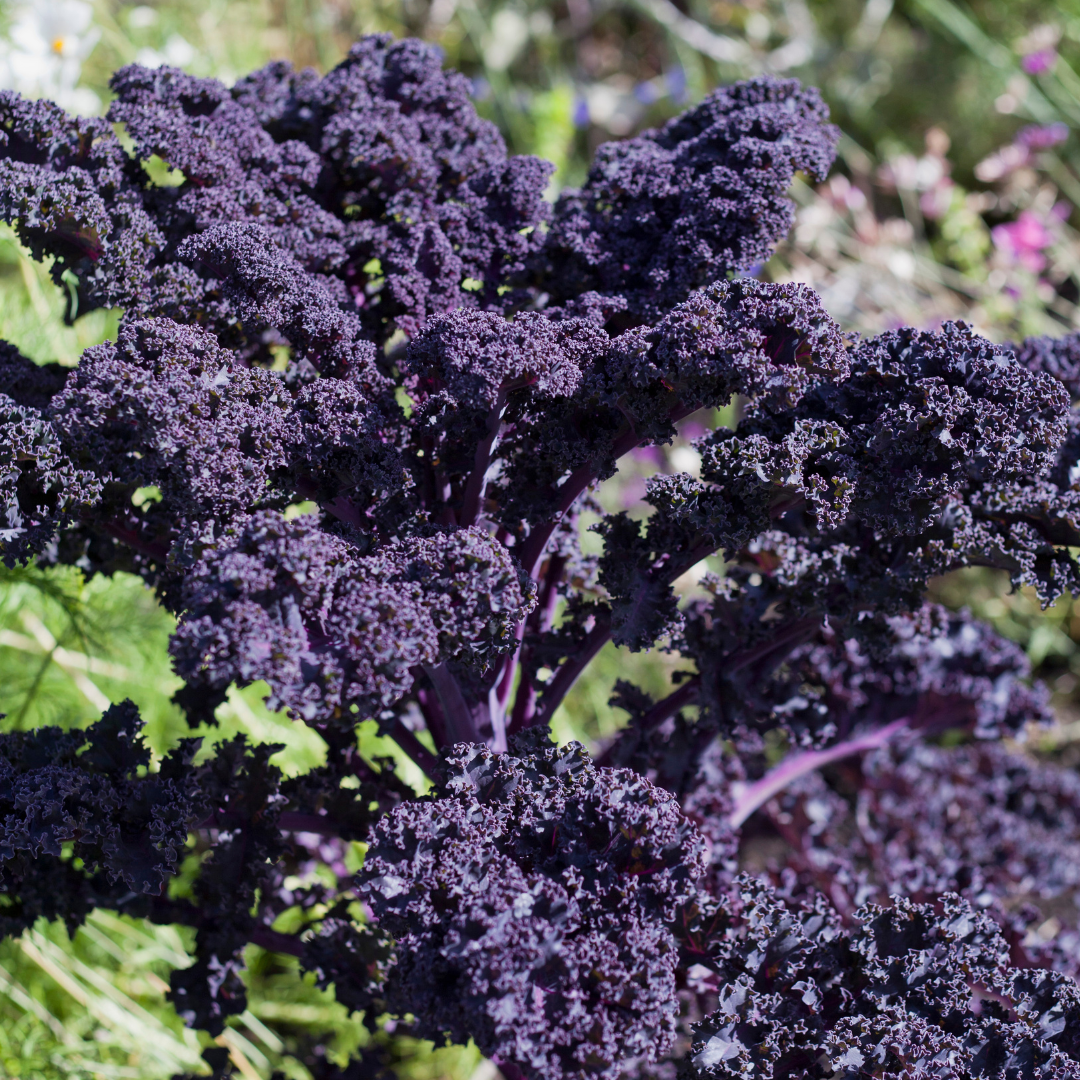Sunbor Kale Seed
Sunbor Kale Seed
Couldn't load pickup availability
Seed Type
Seed Type
F1 Hybrid (Untreated)
Seeds Per Pack
Seeds Per Pack
50
Days to Maturity
Days to Maturity
60
Disease Resistance
Disease Resistance

Why Grow Sunbor Kale?
A Gorgeous Purple Twist Bring vibrant color and incredible nutrition to your garden with Sunbor Kale, a stunning red curly kale variety. Similar in growth habit to our popular Darkibor Kale, Sunbor offers the same vigorous, upright plants and heavily frilled leaves—but with a gorgeous purple twist. Its deeply curled leaves boast rich purple hues, carried on bright purple stems that make this variety as ornamental as it is edible. Sunbor’s beauty is matched by its performance. The plants are vigorous, uniform, and highly productive, providing an abundant harvest of nutritious leaves.
Exceptional Flavor and Nutrition Like many kales, both the flavor and the color of Sunbor improve in cool weather, developing a sweeter taste and deeper purple tones after a touch of frost. Beyond its striking appearance, Sunbor Kale is packed with nutrition. The deep purple pigments are a sign of powerful antioxidants, adding to the already impressive vitamin and mineral content kale is famous for. Whether eaten raw in salads, blended into smoothies, or cooked in hearty dishes, Sunbor delivers both exceptional flavor and health benefits.
Sunbor Kale Growing Tips
• When to Plant Kale
Kale is considered a "cool season" vegetable that grows best in the fall and early spring months. Although this variety will often make it well into the summer months without bolting, the best performance and production will come during the cooler months.
Kale can be directly sewn or transplanted in the backyard garden, although we prefer transplanting this variety. Plant seeds indoors or in a greenhouse 4-6 weeks before your intended in-ground planting date.
Kale transplants should be planted outdoors once they have a well-established root ball in their seed starting containers. Aim to put your transplants in the ground in the late summer months for a fall planting or in the late winter months for a spring planting.
Kale is very cold-tolerant and will grow well throughout the winter in the southern states. For gardeners in the middle or northern states, frost protection would be needed to grow them through the winter. Or you can opt for a late winter planting as temperatures are warming going into spring.
When transplanting kale plants, space them approximately 1' apart along rows or in your containers or raised beds. If directly sewing them into your garden, you can plant seeds a few inches apart and thin later. Some growers prefer to plant them thick and harvest as baby greens, while other growers prefer a full sized plant that will require 1' of space.
• How to Fertilize Kale Plants
It's always a good idea to apply some pre-plant fertilizer to the soil prior to planting kale transplants. We like to sprinkle Coop Gro organic fertilizer on our raised beds or along our rows prior to planting. This ensures the plants have the right nutrients to put down roots in their new soil.
Because ka,e plants are usually in your garden for several months (if not 7-8), they'll need repeated applications of fertilizer for solid production. We like to feed ours every 3-4 weeks with a liquid solution of AgroThrive General Purpose or by sprinkling Coop Gro around the base of the plants and lightly mixing it into the soil.
• When to Harvest Kale Greens
Kale greens can be harvested whenever you'd like! Some gardeners like to harvest "baby kale greens" as soon as the leaves are as big as their hands, while others prefer to wait until the leaves get larger.
When harvesting, be sure to leave 3-4 leaves on the top of the plant so it can continue to grow. Harvest the lower leaves as the plant grows and leave the top leaves for continual production throughout the cool season.

